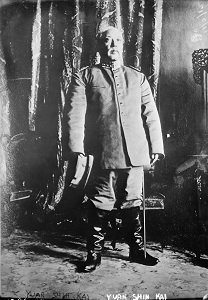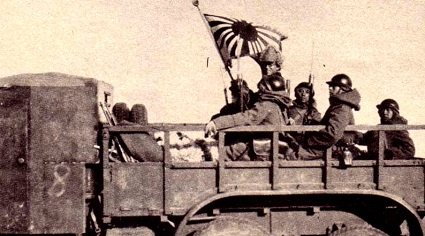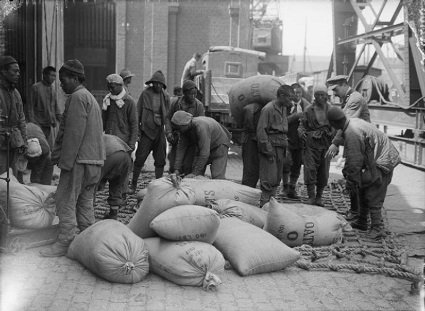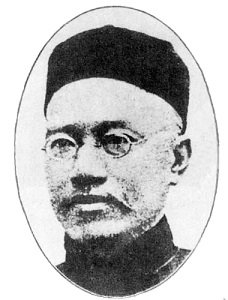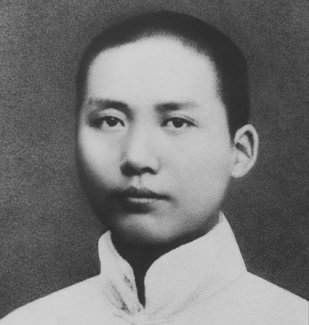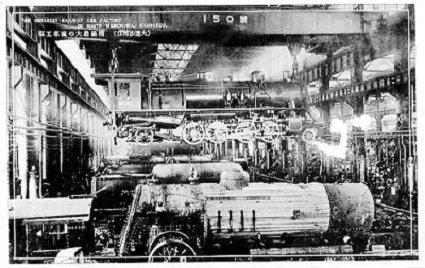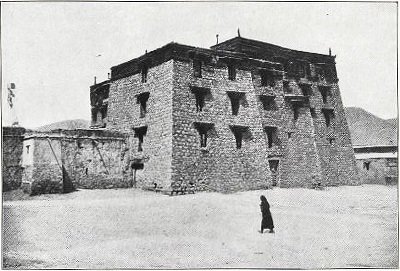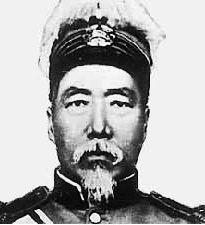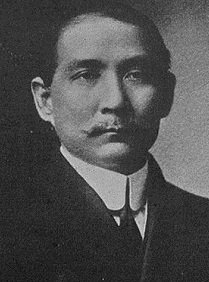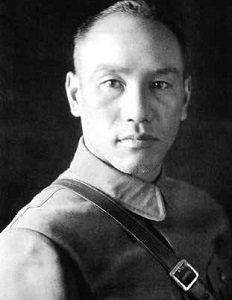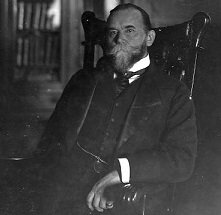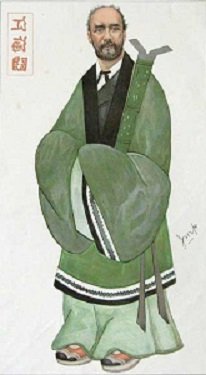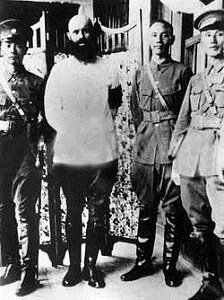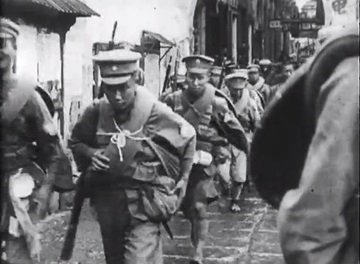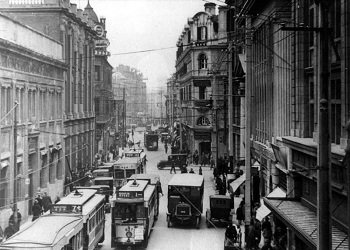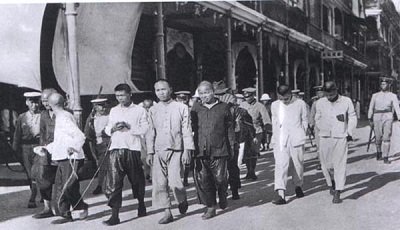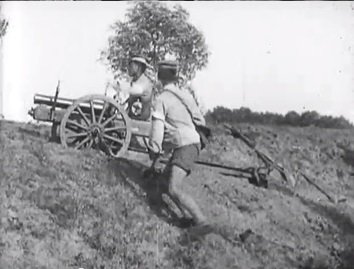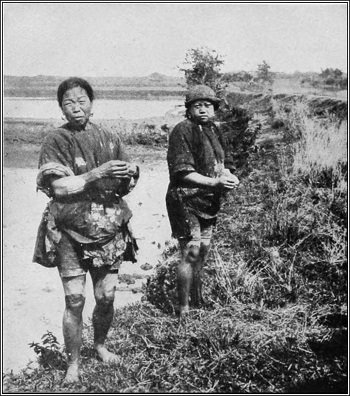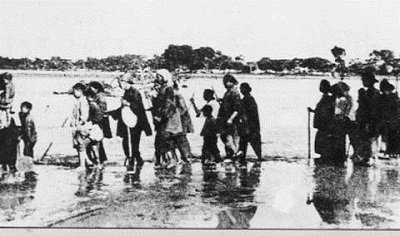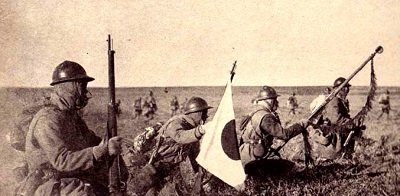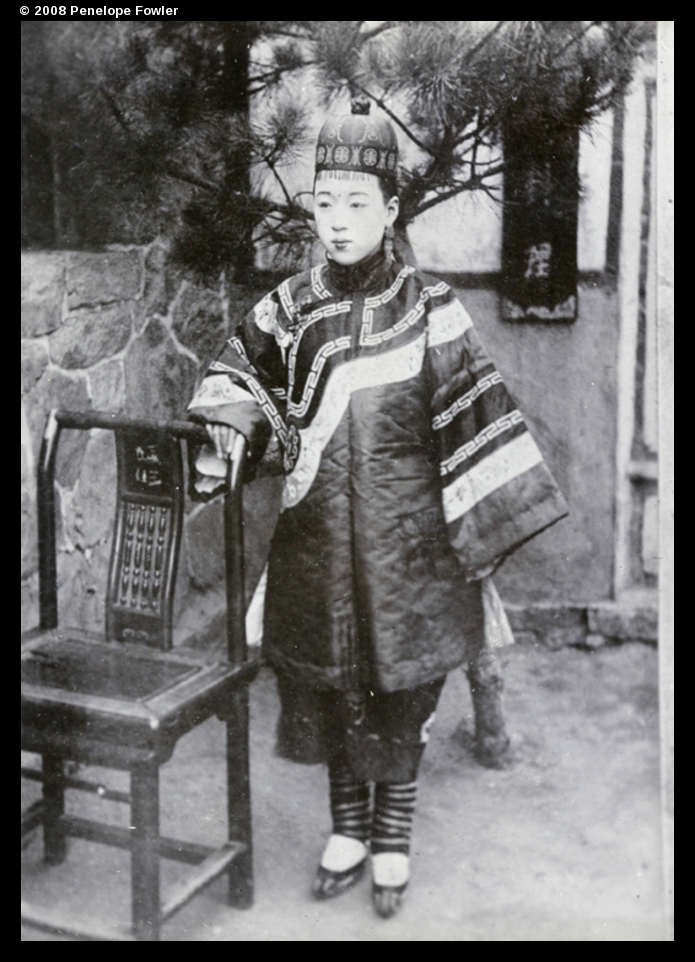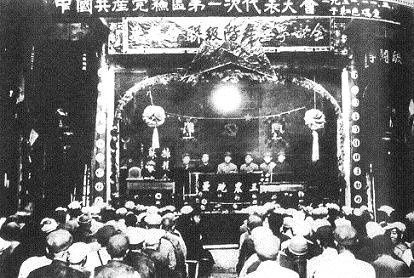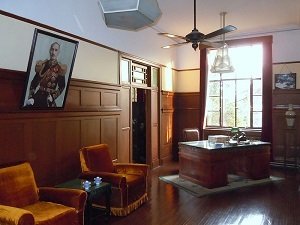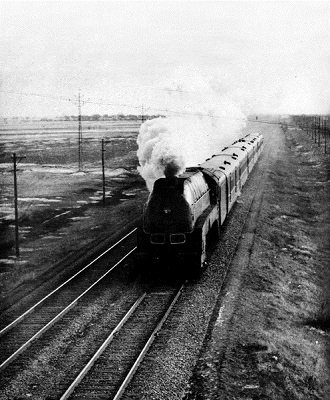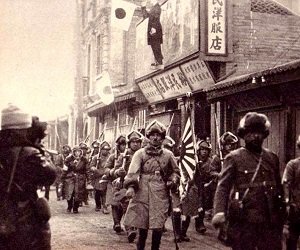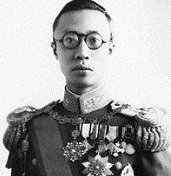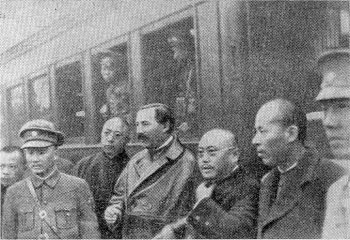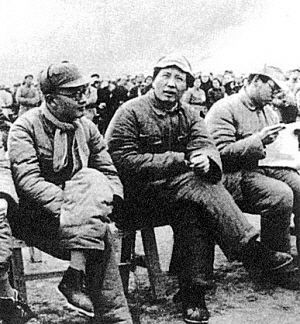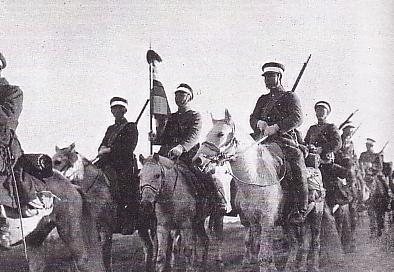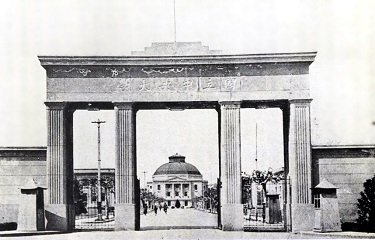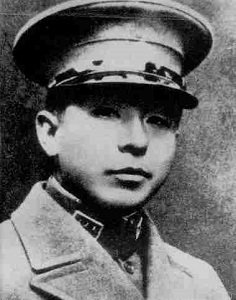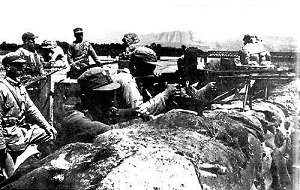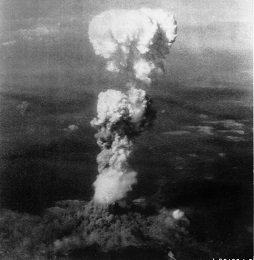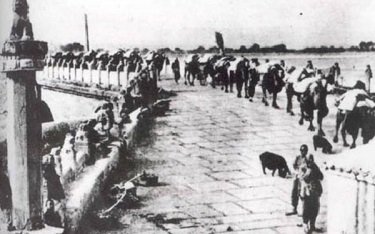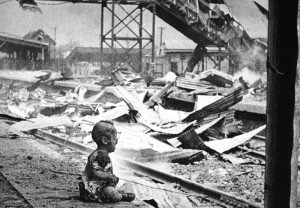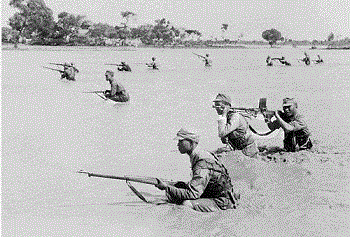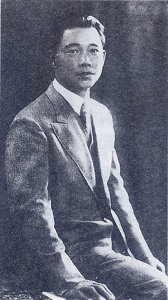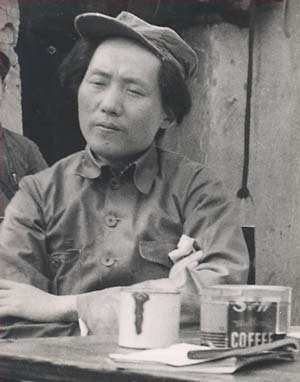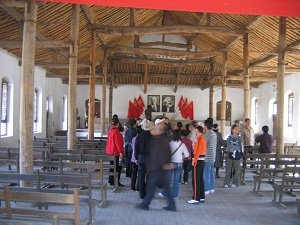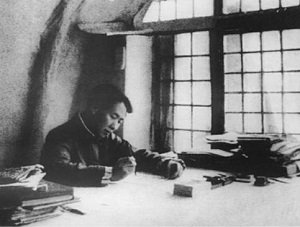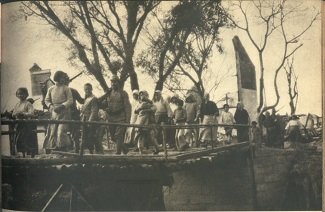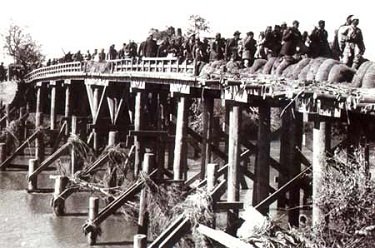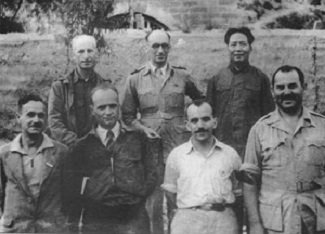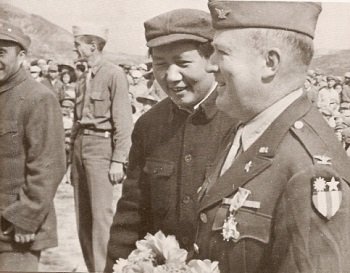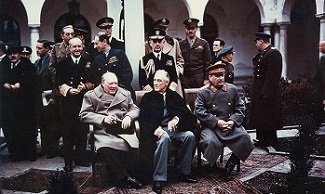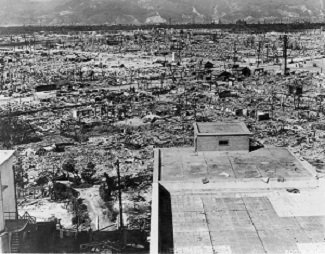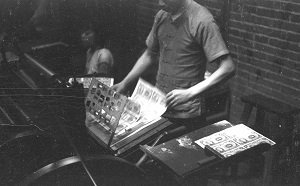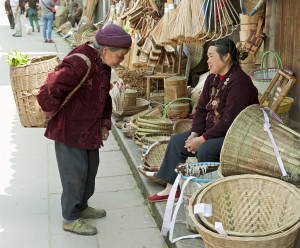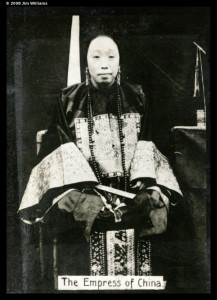Modern Chinese History I: The Republic of China 1911-1925
Introduction
The Qing Imperial Monarchy was ultimately toppled by a decentralized revolution. Once it had been overthrown, it proved hard to find a new governmental structure that was satisfactory to all the regional economic and political interests which had worked to depose the Manchus. All agreed that China should be unified, that foreign imperialism must be halted and that Chssets. However, revolutionaries wanted to achieve these goals through the wholesale restructure of government and society while conservatives wanted a new political and societal structure that preserved the influence they had acquired during the Qing Dynasty.
The first decade of the Republic of China passed without it being able to install an effective central government. As regional warlords became more powerful and as China became disillusioned with the West following the Versailles Treaty’s transfer of Germany’s Chinese concessions to Japan, many educated Chinese increasingly feared that their country would be sliced up by colonial powers.
In response, intellectuals renewed their search through every kind of political organizational theory in the hope of finding the best governmental structure for China. For instance, the merits of organizing China’s social fabric around Confucianism were hotly debated. As part parcel of this debate, many began to argue for the use of vernacular Chinese in writing and education in order to improve literacy and the accessibility of information. The advantages of Marxist socialism were explored. In 1921, the Chinese Communist Party was founded in Shanghai with 53 members. Its founding corresponded with a rise of urban labor activism and of a merchant class that was increasingly nationalistic. All the while, western scientific knowledge was sought in order to advance China’s modernization. China’s border regions took advantage of this upheaval to gain greater economic and political independence.
Yuan Shikai, the Kuomintang, the Second Revolution, Failed Dynastic Restoration
In 1911, the Qing Dynasty was deposed. On 12th February 1912, the Republic of China was founded. For his help in overthrowing the dynasty, Sun Yat-sen agreed that Yuan Shikai would become the first president of the new Republic. Meanwhile, Sun Yat-sen and his followers founded the Kuomintang (KMT) or the Nationalist Party, also referred to as the Guomindang. The KMT was a loyal opposition party designed to compete in electoral politics with Yuan Shikai and his followers. During the first assembly elections held in December 1912, the KMT won approximately 43% of the vote. Yuan Shikai was not pleased with these electoral results, nor with the KMT’s constant criticism of his policies.
The KMT was particularly censorious of Yuan’s management of national finances. By 1913, ineffective taxation meant that the government was running an approximately 13 million yuan monthly deficit. National cash flow was further hampered by foreign control over many of China’s economic assets. The foreign-controlled Imperial Maritime Customs, for instance, directly deposited China’s custom revenue in foreign banks which was then used to pay the interest on China’s rapidly accumulating foreign debt. Even salt taxes were under foreign supervision. Yet, instead of addressing tax and revenue collection directly, Yuan organized an additional loan of £25 million from a five-power foreign banking consortium. Yuan felt the loan necessary to give him the resources he needed to defend his power. Sun Yat-sen and his followers argued that the loan would further increase foreign control over China’s economy.

Song Jiaoren
In 1913, the KMT campaign manager and a potential-prime minister, Song Jiaoren, was assassinated. Many assumed that his death was the result of orders given by Yuan Shikai. The KMT responded to the murder by calling for Yuan Shikai’s resignation. When he refused, they launched what has been called the Second Revolution. Yuan Shikai crushed the revolt easily, forcing Sun Yat-sen to flee to Japan. Yuan’s quick victory against the KMT fueled his already growing dreams of grandeur. While Yuan supported a strong, modern, industrialized Chinese state, he now envisioned that this state would be ruled by a dynasty with himself as emperor.
Foreign powers observed changing events in China closely. Their main priority was to protect their Chinese investments. These totaled almost $788 million in 1912 and reached $1.61 billion by 1914. They also wished to safeguard their nationals in the event of any recurrence of a Boxer-like, anti-foreign outbreak.
To obtain foreign support for his imperial ambitions, Yuan signed agreements with Russia and Britain giving them special privileges in Outer Mongolia and Tibet respectively. Yuan also agreed to the bulk of Japan’s infamous Twenty-One Demands presented to China by the Japanese ambassador in January 1915. The Twenty-One Demands effectively allowed Japan to take significant jurisdiction over Shandong, South Manchuria, Eastern Mongolia and China’s coastline. It also gave Japan the right to extract revenue from railway and mining concessions and placed in joint Sino-Japanese administration the huge Han-Ye-Ping Iron and Coal works in central China. Yuan’s American advisor, Frank Goodwin, contended that China might be better suited to a constitutional monarchy than it was to a republic, and thus also did not object to Yuan’s move to assume imperial power.
With foreign support in place, Yuan’s monarchical movement went public. In December 1915, Yuan accepted “petitions” by provisional representatives which asked that he become emperor. His reign, to be called Hong Xian, or the Glorious Constitution, was to start on 1st January 1916. Yet he badly misread the Chinese public. The Chinese were particularly angry about Yuan’s signing of the humiliating Twenty-One Demands. On 23 December 1915, an ultimatum was delivered to Yuan to stand down or face civil war. Thwarted, Yuan Shikai died in June 1916 of kidney failure, leaving a power vacuum and no national consensus about how China should move forward politically.
Warlord General Zhang Xun, a zealous supporter of the Qing imperial family, led his army into Beijing in mid-June 1917 to restore the abdicated Qing Emperor Puyi, now a boy of 11. His efforts were foiled by rival generals, and once-again the emperor was deposed. Instead of being punished, it was decided that Puyi was to be given a modern Western education under European tutors. General Zhang’s failed insurrection destroyed the pretense that China’s central government had any significant power. Instead, power devolved to the provinces into the hands of warlords.
Warlordism 1916-1927
During the Warlord Era, a nominal government continued to claim authority in Beijing, but its power was almost entirely restricted to the capital and to relations with foreigners. In actuality, the political structure of China was completely fragmented. Generals and regional landlords vied with each other for power and formed constantly shifting alliances in a manner reminiscent of the Warring States Period.
The nature of the warlords was as varied as the provinces over which they ruled. Some were ruthless despots and thugs while others were educated and worked to instill in their men their own ideas of morality. Some subjugated whole provinces, financing their armies through local taxes gathered by their own officials. Others ruled only a few towns, raising money from theft. Some warlords supported the Republic, preferring that their territory be reintegrated into a valid constitutional state. A number choose to work with foreign powers, whether they were the British in Shanghai, the Japanese in Manchuria or the French in the southwest. Some grew opium in order to generate revenues.
World War I and the May 4th Movement
When World War I broke out, to strengthen its claims on Chinese territories, Japan entered into a series of secret treaties with Britain, Russia, the United States and the acting Chinese government. The February 1917 Anglo-Japanese agreement required Britain to support Japanese claims in Shandong and agreed that Germany’s Pacific possessions north of the equator were to go to Japan while those in the south could be claimed by Britain. The February 1917 Russo-Japanese agreement acknowledged Japan’s Twenty-One Demands and Russia’s territorial gains in Outer Mongolia. The November 1917 American-Japanese Lansing-Ishii Agreement concluded that: “geographical propinquity created special relations between nations”. In other words, the US recognized that Japan, by virtue of its geography, had a special position in China. Finally, in a September 1918 secret pact, the Japanese were granted the right to build two railways in Shandong and to station Japanese troops there for a ¥20 million payment to Beijing.
Although there was no historical precedent of China engaging in global events far from its shores, China entered World War I on the side of the Allies in 1917. China believed that if it fought to defeat Germany, then it would be able to reclaim Germany’s Chinese concessions. While China could not offer the Allies combat troops, it could provide manpower which would free up French and British males to go to the front. By 1918, an estimated 140,000 Chinese were laboring in France. Ultimately, 2000 Chinese workers died in France and a further 543 lost their lives at sea.
After World War I ended, the Chinese delegation went to the Versailles peace negotiations believing they would benefit from the principles of democracy and self-determination which Woodrow Wilson espoused. Specifically, they hoped to recover Shandong and to abolish the so-called ‘Unequal Treaties’, under which foreign powers maintained privileged statuses in China. Instead, they were informed that the peace conference would deal only with those problems arising from the conclusion of the war. Only Shandong, therefore, qualified to be discussed. Moreover, the secret treaties that Japan had concluded, including the secret pact with the acting Beijing’s government, meant that China’s claims to Shandong had been effectively forfeited.
The inability of China to achieve any of their objectives, despite having fought with the Allies, humiliated and angered China. Its sting felt all the sharper as it came on top of the disgrace of Japan’s Twenty-One Demands. In protest, on May 4th, 1919, 3000 students from 13 universities began to peacefully march through Beijing. They handed out leaflets written in Chinese vernacular which explained how the loss of Shandong was equivalent to the end of China’s territorial integrity. They called on all Chinese to protest. The march turned violent at the house of Cao Rulin, the Minister of Communications. Cao had backed the pro-Japanese Anfu group and was considered by many of the protestors to be one of China’s worst traitors. Inside, although Cao was absent, the students found Zhang Zongxiang the Chinese ambassador to Japan. They severely beat Zhang and set Cao’s house on fire. Thirty-two students were arrested, but they were set free three days later.
Further protests erupted throughout China. The student protests generated nation-wide sympathy. In Shanghai alone, as many as 60,000 workers staged some form of work stoppage in solidarity. These strikes marked a new development in Chinese history. Thereafter, protesters frequently made good use of strikes to fight injustice, despite the risks of unemployment, beatings and even death. The demonstrations, strikes and boycotts that followed became known as the May 4th Movement. The May 4th Movement is seen by many to mark the beginning of modern Chinese nationalism. Today, May 4th continues to be marked as an important commemoration with the date carrying huge political significance. The immediate result of the students’ actions was that the Chinese delegation left France without signing the Versailles Treaty.
Intellectual Awakening
The failure of the Republic, the rise of the warlords, the betrayal of Versailles and the increasing encroachment of imperial powers into Chinese territory heightened a Chinese fear present since the time of the Opium Wars: that China was at risk of being dismembered. This fear caused Chinese intellectuals and leaders to search for tools and philosophies that would allow China to become a modern, unified nation free from imperialism. Many continued to try to adapt western philosophies and science to the Chinese situation.
In 1896, for instance, Yan Fu translated into Chinese the writings of Huxley and Spencer which applied Darwin’s “survival of the fittest” theories to human society: just as animals struggle for survival, Huxley and Spencer argued that people – and eventually their societies – also struggle, with the weak becoming prey to the strong. To prevent extinction, Yan argued that China and the Han Chinese people must evolve new strength. Early twentieth century Chinese thinkers applied the idea of strength broadly. Indeed, in his 1917 essay, A Study of Physical Education, Mao Zedong criticized the Chinese’s traditional aversion to physical exercise, arguing that physical prowess strengthened a people’s determination as well as making them more effective combatants.
Confucianism and traditionalism were also attacked. Except for friend-friend, the remaining four relationships of Confucianism – ruler-ruled, father-son, elder brother-younger brother, and husband-wife – were hierarchical in nature. Many intellectuals argued that this rigid social structure prevented China from modernizing, as it encouraged subservience and discouraged independent thinking. It also completely subjugated women. In a series of 1919 articles, Mao advocated the importance of granting women greater rights, arguing that empowered women would allow China to face the world with the full strength of its 400 million people.
Increasingly, these views were expressed in magazines and publications such as the New Tide, The Weekly Critic and The New Youth. These magazines helped expand the intellectual debate both geographically and throughout society. Often their articles were written in a simple vernacular style that could be understood by those with little education.
Debate about China’s national language began soon after the Republic was founded. By 1913 it was agreed that Mandarin would be the national language. Pronunciation was standardized and phonetic symbols were introduced to represent this pronunciation. By 1917 intellectuals began to argue that this standardized Mandarin should be written in a vernacular which was closely aligned to spoken language as opposed to the difficult classical language of Confucian scholars.
Other Chinese intellectuals lost faith in the West after Versailles and found it difficult to accept the West as both teacher and oppressor. Intellectuals such as Li Dazhao and Chen Duxiu began studying Marxist socialism and the Bolshevik Revolution. Socialism was appealing because it offered a way to reject both the constraints of Chinese tradition and Western domination. It also represented a goal yet unrealized in Western Europe and America. Its success in China would put China ideologically ahead of the capitalist states.
The Russian Revolution also brought home to many educated Chinese that the outside world was changing in radical ways. Seeing these changes caused many Chinese intellectuals to believe in China’s own ability for radical change. The intellectual and psychological appeal of Marxism was further strengthened in 1919 by the Soviet readiness to renounce the old Tsarist special rights and privileges in China. Even though the Soviets later backtracked from some aspects of their offer – specifically regarding returning Chinese railways without compensation – the Chinese remained appreciative of their gesture, particularly in contrast to Western and Japanese imperialist policies.
Increasingly debates within China centered on the relative advantages of gradual social reforms versus rapid radical change. In contrast to radical thinkers advocating a complete overthrow of Chinese societal norms, pragmatists such as Hu Shu argued for steady change in Chinese society that would be driven by scientific and methodical solutions to specific practical problems. This pragmatic, evolutionary method was partially adapted by the KMT. Communists, on the other hand, agreed with thinkers such as John Dewey who visited China from 1919 to 1921. Dewey argued that China’s 1911 Revolution was failing because it was externally imposed and did not alter the norms of Chinese life which were still largely governed by Confucianism. Chinese communists interpreted this to mean that China required a complete overhaul of Chinese society and industry.
Yet, regardless of their approach, most Chinese thinkers of the era recognized the need to adapt foreign ideas creatively to the Chinese experience. This was especially true for the Marxists. Li Dazhao argued, for instance, that China was being subjugated by foreign imperialists that exploited the Chinese people just as capitalists exploited workers in more developed countries. In China, it was often the imperialists who owned the means of production and took the workers’ surplus value. Perhaps most critically, if Marxism was to be applied to China, somehow the central role Marxist theory gave to the urban proletariat in revolution would have to evolve. China was a country of peasants despite its growing number of urban workers.
As Li, and his colleagues grappled with how to adapt Marxism to China, he encouraged his students to work in the Chinese countryside around Peking. By the early 1920s, under Li’s guidance, Peking University students had founded the Mass Education Speech Corps and were traveling to villages. Those students learned firsthand about the desperation and the poverty of the Chinese countryside. This poverty was often further aggravated by droughts and floods bringing famine and plague.
The Birth of the Chinese Communist Party 1921 – Li Dazhao and Mao Zedong
Increasingly, the National University in Beijing became a hotbed of radicalism. As early as 1918 Li Dazhao, then a librarian, had declared himself a Marxist. He founded the New Tide Society followed by the Marxist Research Society which eventually became the Society for the Study of Socialism. By March 1920 the various Marxist groups in Beijing united to form the Beijing Society for the study of Marxism. Li’s library assistant was Mao Zedong. Born to a wealthy farmer in Shaoshan, Hunan, Mao took up a Chinese nationalist and anti-imperialist outlook early in life after having been profoundly influenced by events such as the May 4th Movement. He too was an early adopter of Marxism-Leninism.
In April 1920, Russian Gregory Voitinsky met with Li and other radical academics and students. In Shanghai he held meetings with Chen Duxiu, an extremist from the May 4th generation. It was during these meetings that it was decided to create the Chinese Communist Party (CCP). The first secret Congress of the CCP took place on July 23, 1921 on the premises of a girls’ school in Shanghai, but was eventually relocated to a boat on the South Lake near Jiaxing in Zhejiang province for greater secrecy. 13 delegates attended representing the 53 members of the local Chinese communist groups in existence. Mao Zedong was said to be among these delegates, though this has been questioned by some academics. Early CCP objectives included the revolutionary overthrow of capitalism, the rule of the proletariat and an alliance with the Third International, the Comintern. Under the leadership of Vladimir Lenin, the Comintern’s goal was to foster world communist revolution. Additionally, the CCP planned to establish more labor unions, publish magazines and exploit other avenues to organize and educate the working class. During the Second Congress in July 1922, it was decided that the CCP would create a temporary alliance with the KMT led by Sun Yat-sen in order to advance its revolutionary objectives.
However, while the early Congresses were able to agree overall objectives for the fledgling Communist Party, the means to achieve these objectives continued to be debated. In Shanghai, Chen subscribed to the general European Marxist view that industrial workers were the key to revolution. In Beijing, Li continued to argue that as the peasantry constituted more than 90% of the population and as agriculture was still the basis of the national economy, the peasants must lead the Chinese Communist revolution. This argument strongly influenced the thinking of Mao Zedong. After Li was executed on the orders of a Beijing-based warlord in 1927, it was Mao who carried on the push to make the peasant central to the Chinese Communist Revolution, putting his mentor’s ideas eventually into practice.
The Rise of the Chinese Workers Movement
At the same time that Marxist ideas were beginning to be seriously explored in China, China was seeing the emergence of a politically conscious merchant class and urban labor force numbering between two and three million by 1919. Western and Japanese imperialism in the late 19th and early 20th centuries had spurred urbanization and industrialization in northeast China and the Treaty Ports. This industrialization was driven by the coupling of foreign capital with abundant, cheap labor. When the World War I erupted, Europeans powers recalled all nationals from China, allowing a new generation of Chinese entrepreneurs and managers to fill their void. This gave the new Chinese entrepreneurs invaluable business experience and allowed them to make large fortunes. Japan, too, competed to take advantage of the European absence.
Working conditions in these factories were often horrific. Conflict between workers and managers grew progressively more frequent. Indeed, by the 1920s, there was already a history of trade labor unions and strikes as was seen during the May 4th protests. As CCP power grew, it would increasingly exploit this labor movement to its advantage.
A pinnacle of this labor protest occurred on May 30th, 1925. The crisis started when Chinese workers, angry at being locked out of a Japanese-owned Shanghai textile mill during a strike, broke into the factory and damaged machinery. Japanese guards reacted by firing into the crowd, killing one worker. His death ignited public anger, student demonstrations, further strikes and arrests. On the May 30th thousands of workers and students gathered at the Nanjing Road Police Station, insisting on the release of six arrested Chinese students and protesting foreign imperialism. As the numbers of protesters increased and as they began to chant “kill the foreigners”, the commanding British inspector ordered the group to disband and then fired before the protesters could obey, killing 11 and wounding 20.
Chinese anger over the slaughter spread nationally. At least 28 other cities held rallies in solidarity with the May 30th victims and a general strike was called in Shanghai. Foreign powers brought in troops to protect their international settlements. The tension from the May 30th incident was escalated in June when a major strike was launched in Hong Kong targeting the British. During a strike rally, British troops shot at protesters, killing 52 Chinese and wounding 100. Chinese fury boiled over and the strike in Hong Kong – which eventually lasted 16 months – was coupled by a boycott of British goods. Not until December, when the British police inspector and his lieutenants were fired and when an indemnity of 75,000 Chinese dollars was paid to the deceased families did public outrage quiet.
Mongolia, Tibet and Xinjiang
Although Mongolia, Tibet and Xinjiang were explicitly stated in the provisional constitution of March 1912 to be included in the territory of the Republic of China, this was never realized in actuality. The Qing’s collapse allowed local political forces to make a bid for independence from China. This aspect of Chinese history is keenly contested as are the border regions themselves. The CCP argues that these territories have always remained under Chinese control, apart from Outer Mongolia which has been recognized as an independent country since 1945 (Inner Mongolia has remained as part of China). In contrast, many Mongols, Tibetans and Uyghurs believed that the degree of independence experienced in the years following the Qing’s fall set a precedent which should allow them to negotiate more independence now.
After the 1911 Revolution Inner Mongolia slipped into the hands of local warlords while Outer Mongolia sought help from Czarist Russia in their bid to create an independent state. Chinese control over Outer Mongolia had always been less direct than it had been in Inner Mongolia. After having defended their independence against the Chinese, Mongolia became part of the People’s Republic in 1924, closely tied economically and militarily to the USSR. Of all the frontier regions, Outer Mongolia was the only one to achieve independence from Chinese control, and this was because of its alliance with the Soviet Union.
By the mid-19th century Manchu and Chinese influence in Tibet was more symbolic than real. The Anglo-Chinese Convention of 1906 effectively repudiated Tibet’s efforts to remain independent by reaffirming China’s suzerainty over Tibet. When news of the 1911 Revolution reached Tibet, Tibetans rose against the Chinese, forcing the remaining Chinese out of the country. By January 1913, the exiled Dali Llama returned to Tibet and insisted that he was now Tibet’s sole spiritual and temporal authority. This separation lasted until 1951 when Chinese troops again invaded the region. This period of separation has been one factor fueling current aspirations for Tibetan independence.
Xinjiang was formally annexed into the Chinese Empire as a province in 1884. Yang Zengxin became the governor of Xinjiang from 1911 until he was assassinated in 1928. Yang largely retained the framework of civil administration that had been used by the Qing Imperial Court to rule its most distant subjects. He succeeded in keeping the region reasonably free from civil strife by isolating it from the turmoil of China proper. Yang’s replacement lacked his authority. Under his control, tensions between the Chinese and the native Uyghur rose. In 1931 a local uprising against the Chinese authorities shifted power into the hands of the local warlords. Thereafter, Xinjiang was to remain separate from China and politically unstable throughout Chinese Republican era.
What happened next
Despite having only 53 members in 1921, CCP membership consistently expanded through 1928 by giving voice to the plight of the working class and peasants. That said, during this time the KMT continued to enjoy greater prestige and numbers. Yet, despite their widely differing objectives, both the communists and the KMT agreed that China should be reunited under one government and that the foreign imperialism must end. With these objectives in mind, the two parties joined forces to retake the provinces from the warlords during the 1924 Northern Expedition.
Yet as communist power and membership grew during the Northern Campaign, KMT’s new leader, Chiang Kai-shek, felt increasingly threatened. In 1927 Chiang launched a coup against the communists in Shanghai. Driven out of the cities, the communists reorganized in rural areas. It was during this time that Mao Zedong, among others, began arguing that the Chinese peasants were to be the key to social change in China. Meanwhile, Chang Kai-shek’s KMT advanced northward. Under his leadership, China was finally re-taken from the warlords in 1928.



